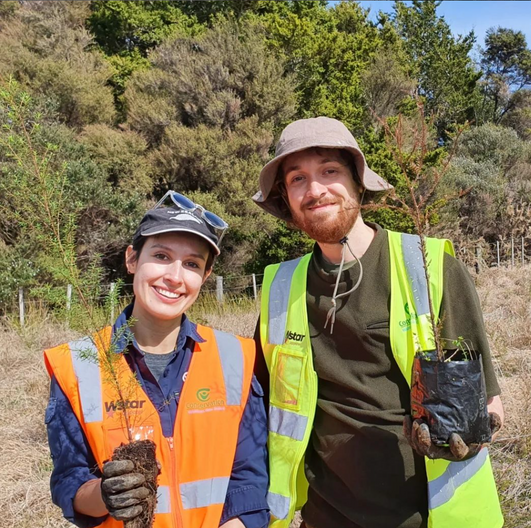
On a mission to protect Papatūānuku
It was another rainy day in Auckland, a sight that had become all too familiar after a particularly disappointing summer. The rain had been heavy and persistent all day and when I left my office to start my commute home, I stepped off of the kerb and disappeared into knee-deep water. The flooding progressively became worse. Infrastructure had been damaged, homes were destroyed in landslides and tragically people had lost their lives.
That day, the 27th of January 2023 was declared as the wettest day ever recorded in Auckland to date. Simultaneously, other parts of Aotearoa New Zealand were experiencing unusually dry conditions.
Scientists have been warning us of extreme weather events as a consequence of climate change for decades. These warnings are no longer just a hypothetical scenario, they are now a reality that is being felt here in Aotearoa New Zealand and around the globe. Whilst the realities of climate change are incredibly scary, I have found beacons of hope within collective, community action to help combat climate change. Through my job, I have been incredibly fortunate to lead hundreds of volunteers to help recloak the whenua (land) in thousands of native plants. Our forests are the lungs of our planet, producing oxygen, absorbing atmospheric carbon dioxide whilst also providing important food and habitat for native ecosystems to thrive and restoring our waterways. An action that feels seemingly small in the grand scheme of things can in fact have a huge impact. At each planting day, I always feel so humbled seeing so many people of varying ages, ethnicities and backgrounds freely giving their time to help care for Papatūānuku (Mother Earth). In recent years I have learnt that the power of collaboration and collective action cannot be overstated. While we wait for large corporations to finally put the planet before profit and for governments to take the climate crisis seriously, it is collective community action that provides me with much needed hope. Hope that not all is lost, and the world we leave for future generations may indeed be a good one.
(Photo 1) In April 2023, I joined a passionate team of conservationists calling for an end to bottom trawling in the Hauraki Gulf. On June 22, a petition containing 36,589 signatures calling for a ban on bottom trawling and scallop dredging in the Hauraki Gulf was presented to MPs on the steps of Parliament.
Bottom trawling is a destructive fishing practice that indiscriminately destroys marine life and decimates marine ecosystems. Bottom trawling involves dragging large weighted nets over the seafloor, essentially bulldozing any marine life in it's path! Bottom trawling has been tearing up the seafloor in the Hauraki Gulf since 1899! It's time for bottom trawling and other destructive commercial fishing practices to be banned once and for all!
(Photo 2) In Sept 2022 I led two tree planting days at Ātiu Creek Regional Park and the Papakura Stream. Together, and with the help of some awesome volunteers and my @conservation_volunteers_nz team we planted over 2000 native trees!
@gemma.england
Story Information:
Country: New Zealand
Topic: Climate Change (General)
Photo or video credit: Gemma England
Text Credit: Gemma England
Date : 17 August 2023

